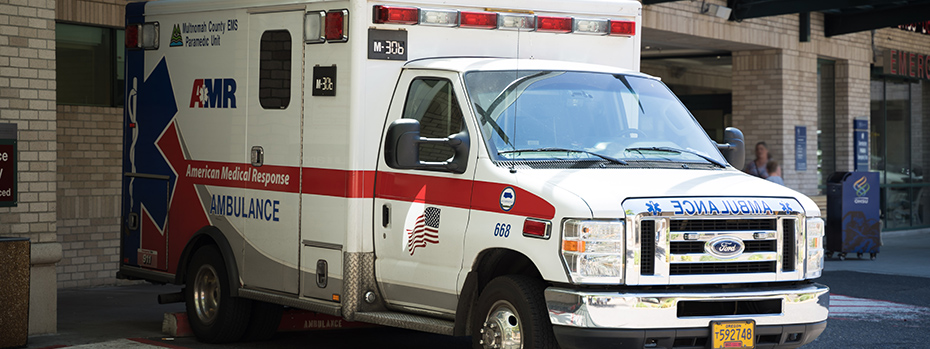Emergency Communications Center

OHSU’s Emergency Communications Center helps Oregon health care professionals with patient transfers, pediatric and neonatal transport, POLST and more.
We help you find the right care at the right time for your patient:
- At OHSU and OHSU Doernbecher Children’s Hospital
- At our OHSU Health partners, Adventist Health Portland and Hillsboro Medical Center
- Elsewhere in Oregon
Our services
OHSU Health Patient Transfer Center
Call anytime to request transfer to OHSU Health for your patient who needs specialty care.
Learn more about OHSU Health Patient Transfer Center.
Pediatric and Neonatal Transport (PANDA)
888-66PANDA (667-2632)
503-494-7520
503-494-7000
Call anytime to request an air or ground transport for your pediatric or neonatal patient.
Learn more about PANDA.
Trauma Communication Center
Call anytime to:
- Check which Level I trauma center can take your patient
- Request that OHSU's helipad be activated for your patient
- Communicate with trauma teams
Medical Resource Hospital
EMS personnel in Clackamas, Columbia, Hood River, Multnomah and Washington counties can call anytime to seek medical direction from an OHSU emergency physician.
POLST Registry
877-367-7657
503-418-4083
503-494-7333
Call anytime to request information about a patient’s end-of-life health care wishes.
Regional Hospital
Call during a mass casualty incident or evacuation to:
- Seek a bed for your patient
- Communicate with EMS or hospital teams
About the Emergency Communications Center
The Emergency Communications Center links OHSU and Oregon’s medical community with secure, integrated networks designed to handle congestion, power outages and more.
We record telephone consultations, transfers, trauma entries, phone calls and radio reports. Our data helps inform quality control and improvement.
OHSU Health Patient Transfer Center:
- Connects you with an OHSU attending physician on a recorded line
- Connects additional specialists for complex cases
- Facilitates transportation for ECMO patients
Pediatric and Neonatal Transport (PANDA):
- Connects you with specialists at OHSU Doernbecher Children’s Hospital
- Sets up and directs patient transportation
- Oversees transfer, admission and bed placement
Trauma Communication Center:
- Monitors capacity and coordinates patient intake at Oregon’s two Level 1 trauma centers, OHSU Trauma Center and Legacy Emanuel Medical Center
- Distributes patients to avoid hospital overload during mass casualties
- Maintains statewide trauma registry
Medical Resource Hospital:
- Provides a vital link between paramedics in the field and emergency physicians at OHSU for:
- Real-time medical consultations
- Medication order approval
- Protocol clarification
- Help talking with patients about accepting treatment
- Direct resuscitation and end-of-life situations
- Supports 24-hour access to Oregon’s POLST Registry, to ensure patients receive the end-of-life health care they desire
Regional Hospital:
- Provides crisis coordination for paramedics and local hospitals
- Alerts and updates hospitals about nature and scope of mass casualty incidents
- Coordinates with National Disaster Medical System
More resources
Seek help placing your patient who needs intensive or acute care: Oregon Medical Coordination Center, 883-449-OMCC (6622)
Seek help placing your patient who needs acute or residential behavioral health services: Oregon Behavioral Health Coordination Center, 844-440-6222
Seek provider-to-provider advice from an OHSU physician: 503-494-4567, 7 a.m.-7 p.m. daily for most specialties
Contact OHSU’s adult or pediatric emergency department: 503-494-7551
Page an OHSU physician: 503-494-8311
Join our telemedicine network: 503-494-4086